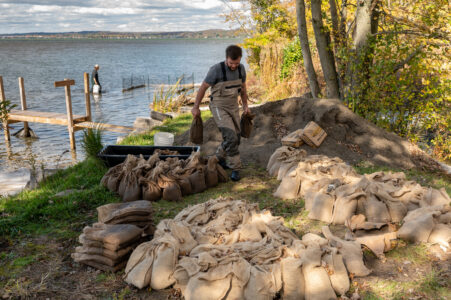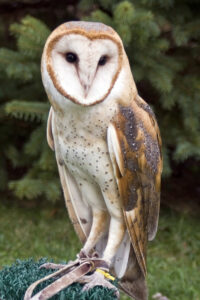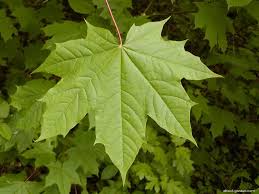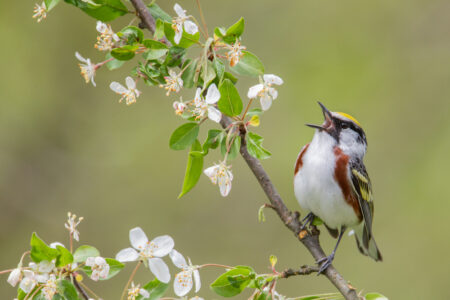The Frogs Of Summer

A gray tree frog is pictured on a branch. Photo by Twan Leenders
It’s no secret – I love amphibians. Frogs and salamanders are, in my opinion, some of the most fascinating animals around. Just think about it. Many start their lives in the water looking more like fish than land creatures, complete with gills and a long, paddle-like tail for swimming. Then, like magic, they morph into fully terrestrial animals, trading gills for lungs, tails for limbs. And they casually pull this off in just a few weeks, right before our eyes in backyard ponds! Honestly, it’s more gripping to watch than most anything on TV.
Add in their nighttime serenades and the stunning color patterns many amphibians show off, and you’ve got my favorite animal group – hands down.
In early spring, it’s impossible to miss the loud chorus of Spring Peepers celebrating the arrival of warmer weather. Or the epic salamander migrations that happen just as the last snow melts and vernal pools fill up. But that springtime amphibian rush is behind us now. Vernal pools are drying up (as they should), and the tadpoles and salamander larvae are making their way into the woods. The same goes for other early breeders like leopard frogs, whose tadpoles are now leaving their preferred floodplain pools as water recedes.
With the spring species settling into summer hideouts, a new cast of amphibians takes the stage – the frogs of summer.
What these summer frogs have in common is that they avoid the temporary, seasonal pools favored by the spring breeders. In fact, two of the big players – the Green Frog and the American Bullfrog – need permanent water, because their tadpoles take more than a year to grow into frogs. Their calls can be heard around just about any pond, marsh, or lake these days, and their breeding season is in full swing now.
Their tadpoles are built for the long haul. They even survive the winter under the ice. In our region, they usually transform into frogs the following summer. But in colder places up north, that transformation may take up to three years! (And yes, those tadpoles grow huge.)
Another summertime favorite is the American Toad. While technically an early breeder, people tend to notice it more in summer when tiny toadlets suddenly appear en masse. Walk near the edge of a pond at the right moment and the ground might look like it’s alive – blanketed with tiny, hopping black specks diving out of your way. All summer long, you’ll see little toads exploring the landscape, often drawn to bugs hanging around garden lights.
But my personal favorite frog of summer? The Gray Tree Frog. Its call – kind of like a Red-bellied Woodpecker’s trill – adds a magical soundtrack to warm summer nights. They’re not very common in our immediate area, but they do occur locally throughout Chautauqua County. Most people don’t even realize they’re around until one strolls across a lit-up window after dark, thanks to their sticky toe pads. Like the other frogs, they love windows at night for one reason – the bugs that are attracted to your lights.
Gray Tree Frogs may be uncommon here, but they are hard to miss once you recognize their call. Males really like to make themselves heard, and I have observed them singing inside tree hollows, downspouts of gutters, or nest boxes for birds–anything that helps amplify their song. If you’re lucky enough to have Gray Tree Frogs nearby, I’d love to hear about it! Knowing where they live in our county helps us to better understand their habitat needs so we can better protect uncommon species.
For everyone else – just enjoy the frogs of summer. Hearing their calls, seeing them, their tadpoles, and their babies are all signs that you’re exactly where you should be – hanging out by the water, soaking up the sun, going for a swim, and maybe enjoying a snack (ideally not bugs).
Chautauqua Watershed Conservancy is a not-for-profit organization with a mission to preserve and enhance the quality, scenic beauty, and ecological health of the Chautauqua region’s lands and waters for our community. For more information, visit chautauquawatershed.org and follow us on Facebook and Instagram.






